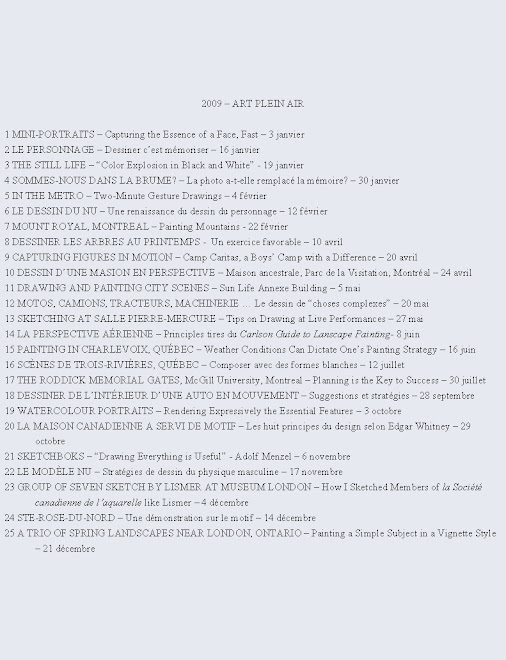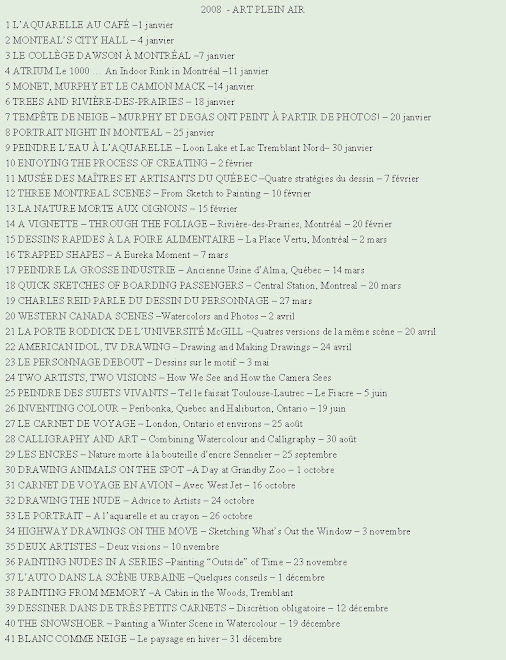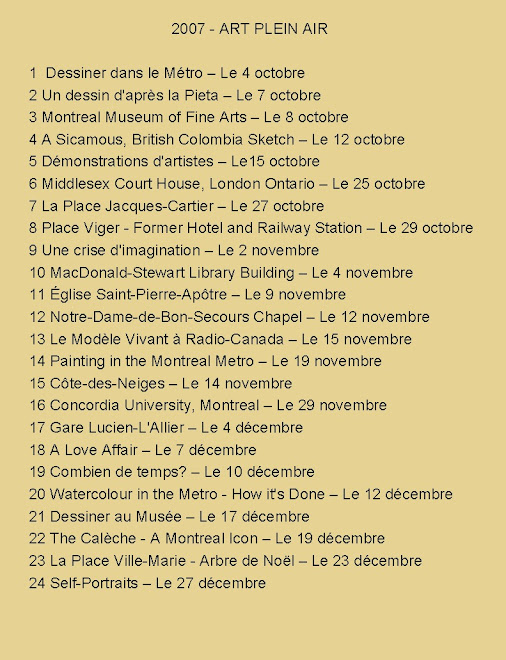Seating
I was lucky to find a second row seat at the right of the stage when I attended The Annual Marianopolis Art Fest Concert this spring. Moreover I was able to place my tools on a small writing table which attached to the back of the seat in front of me. The concert offered by Alumni professional musicians was well attended but most chose to sit further back. This gave me the chance to draw freely without distracting anyone. I was unable to see and draw the pianists’ hands from where I sat but since most renditions were by duos or trios I had plenty of subject matter to interpret.
Sketch book
Although I have drawn in a variety of sketch books at concerts I prefer the 9 in. by 6 in. Pentalic leather imitation spine bound sketch book. The smooth surface and warm tones of the paper which can represent skin tones adequately works well for me. Drawing in spiral books in close quarters can be annoying especially because the spiral can interfere if one wishes to draw across the pages.
Pencils
Sharpening pencils during the performance wastes precious time and can be annoying for neighbors. I bring along a good supply of pencils already sharpened. Although you can keep pencils on your lap, remember that one falling on the floor can be very distracting especially at a classical music concert. It is best to keep your pencils in a cloth container. I draw with graphite pencils, Nero or Derwent pencils both black and sepia toned. The warm toned pencils represent the skin tones and most instruments. The graphite and black pencils are used for contours and to render most clothing. The untouched surface of the paper represents white, usually the white shirts and highlights.
Hatching
At most concerts you may have difficulty manipulating your book in order to hatch lines in various directions. But do so if possible. You will notice from my examples that varying the direction of the pencil strokes when rendering tone creates variety and a sense of motion which suggests musical vibrations. Whenever possible I let one color overlap another to deepen the tone and to link forms.
Think form or shape not detail
Whenever I am drawing musicians from afar I do not attempt to do a portrait of them but rather I try to express body language and to render the fluid combination of instrument and musician as accurately as possible. I will sometimes omit rendering facial features too clearly if at all except when illustrating a singer. It is also very important to study closely and to represent correctly the placement of hands on an instrument.
Trapped shapes
When composing the sketch I observe closely the negative or trapped shapes between duos, trios or groups of figures. The shapes created in between both musicians and instruments often are as interesting as the figures themselves. Practice visualizing these shapes even before putting a mark on the paper.
Fine line marker lines
Between renditions I sometimes re-define parts of the forms with a fine line marker. These darker strokes add focus and clarify certain sections of the drawing. Since marker lines cannot be altered it is best to add them sparingly. For example, a dark line under a foot will anchor a figure to the stage. Again, a dark ink line along a section of an instrument will direct the eye there if that is your intention.
Dating your sketches
Get into the habit of dating and signing your sketches and annotating where the concert took place along with any comments you felt at the time. Looking back later through your sketch books these extra notes will bring back joyful memories.
Raynald Murphy sca

















Aucun commentaire:
Enregistrer un commentaire